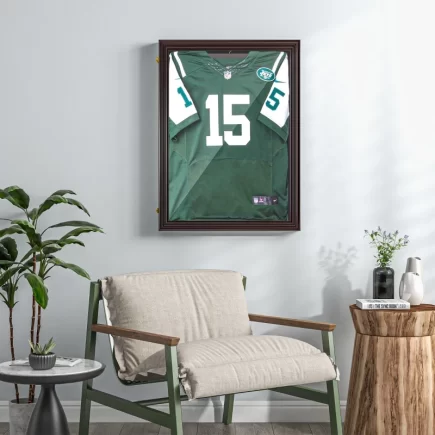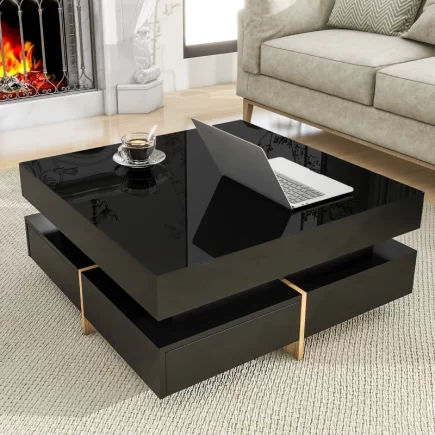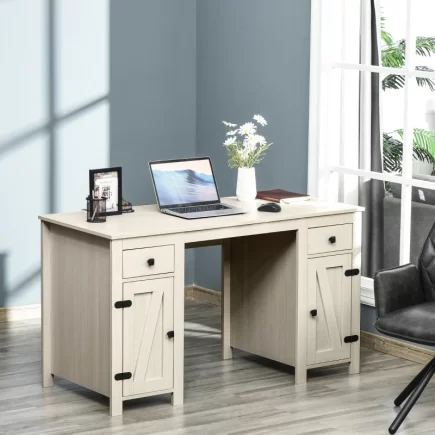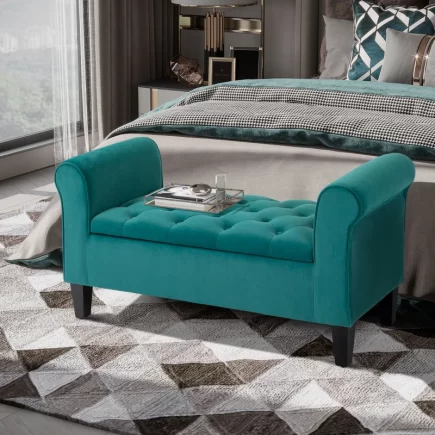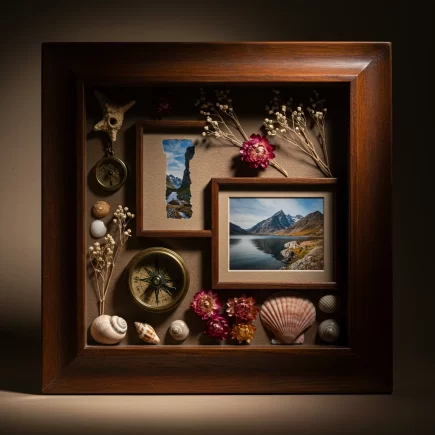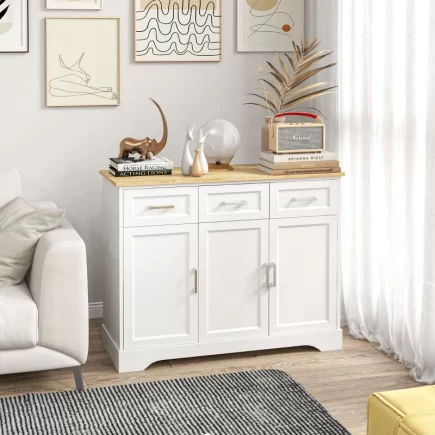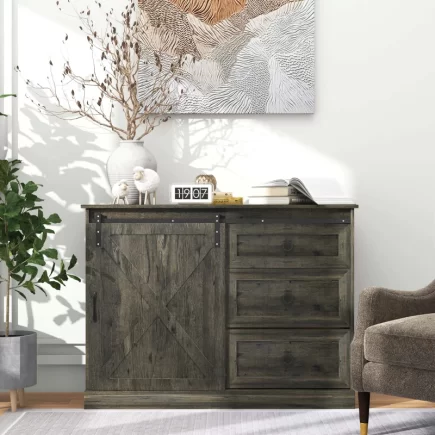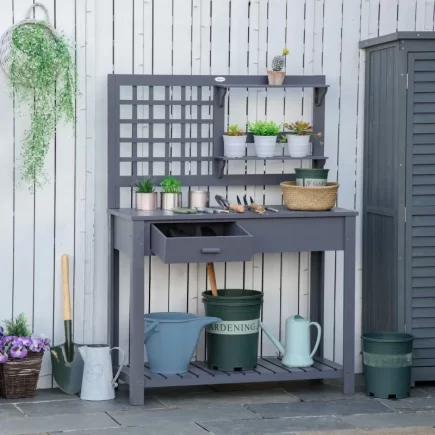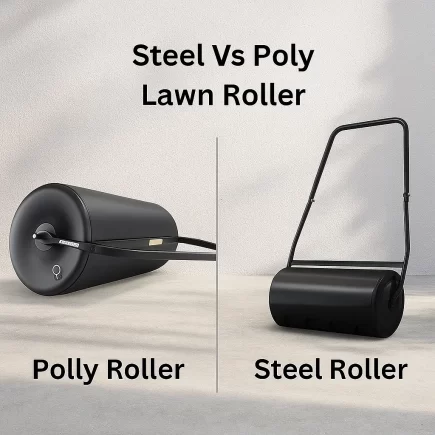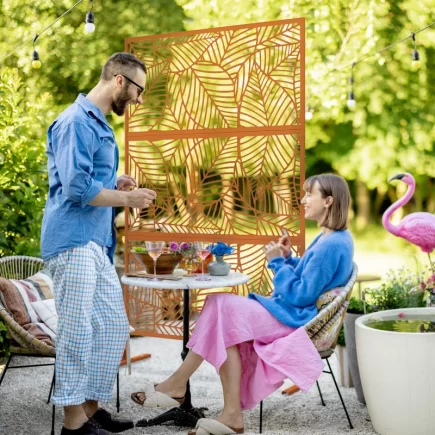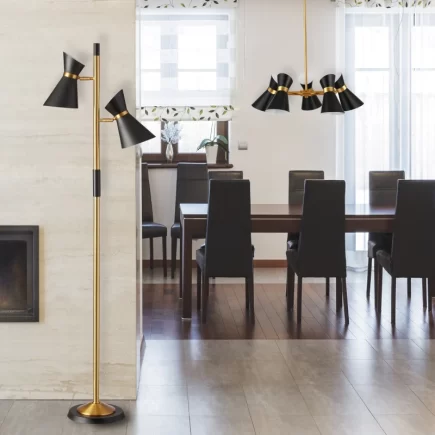Cleaning an ottoman is more than just a routine chore, it’s an essential step in maintaining the visual appeal and longevity of your furniture. Whether it’s made from leather, velvet, or upholstery, each material requires specific care and cleaning techniques to ensure it stays in excellent condition. This article will explain in detail how to clean an ottoman for each type of material, helping you preserve its beauty and functionality for years to come.

How to Clean a Leather Ottoman
Leather ottomans are known for their elegance, durability, and timeless appeal. However, leather can be sensitive to cleaning products and techniques, so it’s important to take a careful approach.

Materials You’ll Need:
- Microfiber Cloth: For dusting and wiping the surface.
- Leather Cleaner: Specially designed for leather care.
- Mild Soap: pH-balanced soap for cleaning.
- Leather Conditioner: To maintain moisture and prevent cracking.
- Soft Brush: For hard-to-reach spots.
Step-by-Step Leather Ottoman Cleaning Process:
- Dust the Surface: Begin by using a microfiber cloth to gently dust off the ottoman. Dusting removes dirt and debris that could scratch the leather if left on.
- Clean with Leather Cleaner or Soap Solution: Apply a small amount of leather cleaner or your DIY mild soap solution to a clean microfiber cloth. Test the cleaner on an inconspicuous area first to ensure it doesn’t alter the color or texture. Gently wipe the ottoman in sections, focusing on any areas with visible spots or stains.
- Condition the Leather: After cleaning, it’s crucial to use a leather conditioner to maintain the material’s softness and flexibility. Apply the conditioner using a clean cloth, massaging it in circular motions. This helps prevent cracks and keeps the leather looking fresh.
- Avoid Direct Sunlight: Leather can fade and dry out when exposed to prolonged sunlight. Always place your ottoman in a shaded area or avoid direct sun exposure to preserve the material’s color and texture.
How to Clean a Velvet Ottoman
Velvet ottomans offer luxurious appeal and a soft texture, but they can be challenging to clean due to their delicate fibers. Velvet tends to trap dirt and dust, making regular maintenance essential for preserving its look.

Materials You’ll Need:
- Vacuum with Brush Attachment: For dust and dirt removal.
- Fabric Upholstery Cleaner: Safe for velvet.
- Soft-Bristled Brush: For restoring the fabric’s texture.
- Baking Soda: For deodorizing.
Step-by-Step Velvet Ottoman Cleaning Process:
- Vacuum the Surface: Start by vacuuming the ottoman using a vacuum with a brush attachment. Velvet’s texture can trap dust and dirt, so this step helps lift the surface debris without damaging the pile.
- Spot Clean Stains with Fabric Cleaner: If your ottoman has stains or spills, blot the affected area with a clean cloth immediately. Apply fabric cleaner, but always test it on a hidden area first to avoid discoloration. Gently blot, never rub, to prevent spreading the stain.
- Steam Clean for Deep Cleaning: If the fabric has ingrained dirt or odors, use a steam cleaner. The steam will help loosen the dirt and refresh the fabric without soaking it. Be sure to use the correct setting for upholstery fabrics, and always check manufacturer instructions before using a steam cleaner.
- Restore the Velvet’s Texture: After cleaning, the pile of velvet might appear flattened. Use a soft-bristled brush to gently restore the velvet’s plush texture. Brush in one direction to maintain the material’s natural sheen.
- Deodorize with Baking Soda: Velvet can absorb odors, especially if it’s placed in areas with high traffic. Sprinkle baking soda over the ottoman and let it sit for 15-20 minutes. Once done, vacuum the fabric to remove the baking soda and freshen up the fabric.
How to Clean an Upholstered Ottoman
Upholstered ottomans come in a wide variety of fabrics, including cotton, linen, and synthetic materials. Cleaning upholstered furniture can be tricky, but with the right materials and methods, it’s entirely manageable.

Materials You’ll Need:
- Vacuum with Upholstery Attachment: For cleaning the surface and seams.
- Fabric Cleaner: Safe for your ottoman’s specific fabric.
- Scrub Brush: For tackling tough stains.
- Steam Cleaner: For deep cleaning.
Step-by-Step Upholstered Ottoman Cleaning Process:
- Vacuum Regularly: The first step is to vacuum the ottoman using the upholstery attachment. This will help you remove dust, dirt, and debris from the fabric, keeping the ottoman looking fresh.
- Spot Clean with Fabric Cleaner: Apply fabric cleaner directly to any stains or dirty spots on the ottoman. Use a clean, soft cloth to blot the area, don’t rub, as this could damage the fabric fibers.
- Steam Clean for Deeper Cleaning: For a thorough deep clean, use a steam cleaner. Steam cleaning is effective at removing dirt and germs that may have embedded themselves in the fabric. It’s also excellent for sanitizing the ottoman, especially in high-traffic areas.
- Scrub Tough Stains: For particularly stubborn stains, use a soft scrub brush to gently work the fabric cleaner into the stain. Scrubbing in a circular motion can help lift the stain without causing damage.
Keep Your Ottoman Clean and Durable
Cleaning your Ottoman is an essential maintenance task that helps preserve its beauty and longevity. Whether it’s leather, velvet, or upholstery, each material requires unique cleaning methods and specific products. By following the appropriate steps for each type, you can ensure your ottoman stays in excellent condition and continues to serve as a functional and stylish piece in your home.
Remember to clean an ottoman regularly to avoid deep-set dirt and stains, and always follow the manufacturer’s care instructions for best results. By doing so, you’ll keep your ottoman looking fresh, extend its lifespan, and maintain its aesthetic appeal for years to come.
FAQs
1. How can I remove pet hair from my ottoman?
Pet hair can be a challenge to remove from fabric-covered ottomans. Use a lint roller or a vacuum with a brush attachment to pick up the hair. For stubborn hairs, lightly rub the fabric with a dampened rubber glove, which will help gather the hair.
2. Can I use a hairdryer to dry my ottoman?
Avoid using a hairdryer to dry your ottoman, as excessive heat can damage certain materials, especially leather and velvet. Instead, let the ottoman air dry naturally in a well-ventilated area away from direct sunlight.
3. How do I remove ink stains from my ottoman?
To remove ink stains from upholstery, lightly blot the stain with rubbing alcohol using a clean cloth. Avoid scrubbing, as it may spread the stain. For stubborn ink stains, professional cleaning may be required, depending on the fabric.
4. Is it safe to steam clean my velvet ottoman?
Yes, you can steam clean a velvet ottoman, but be cautious. Always use the steam cleaner on a low setting, and test it on a hidden area first to ensure it doesn’t damage the fabric. This helps lift dirt without soaking the velvet.

